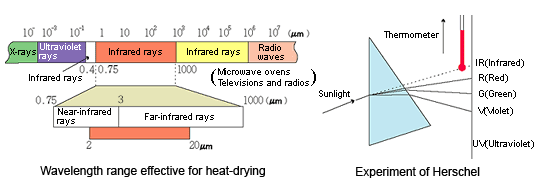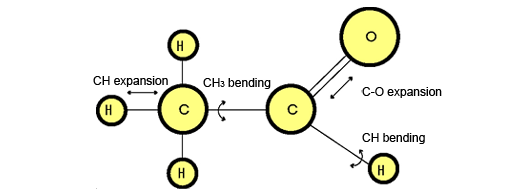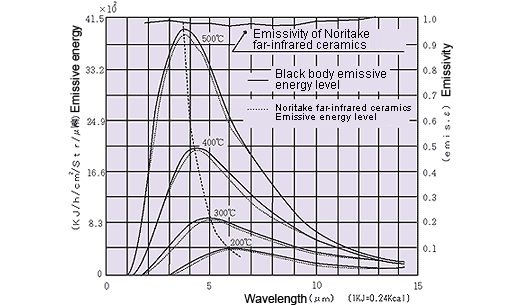What Is Far-Infrared Radiation?
Heating Furnaces / Kilns
Mixing Technology
Filtration Systems
- Catalog Download
- About Our Sales Offices
What Is Far-Infrared Radiation
Wavelengths of 3 μm to 1,000 μm within the infrared range of electromagnetic radiation (light) are known more specifically as far-infrared. Because many materials, including water, plastic, paint, and foods have an absorption range between 2 μm and 20 μm, far-infrared radiation is effective at penetrating and transferring heat.

The Principles of Heating with Far-Infrared Radiation
The molecules that make up matter are all subjected to complex molecular motion, and when that motion increases, the matter heats up. If electromagnetic waves that correspond to the frequency of molecular vibrations are irradiated onto the matter, resonance absorption of those electromagnetic waves occurs in the matter, leading to more violent vibration and higher temperatures.

Distribution of Emissive Energy
When the temperature of the heater is raised, the amount of infrared radiation emitted also increases, and near-infrared waves lengthen significantly. The solid line indicates the transition to the strongest wavelength based on Wien’s displacement law.

Emissive Energy Level
The intensity Q of the heat energy emitted from the surface of the heater:
Q = α・ε・(T/100)4・A[KJ/h]
α: Stefan-Boltzmann constant (α = 20.3KJ/m2.h.K4)
ε: emissivity (black body) [-]
T: absolute temperature (t + 273°C) [K]
A: heat transfer area (m2)
Absorption wavelength characteristics










